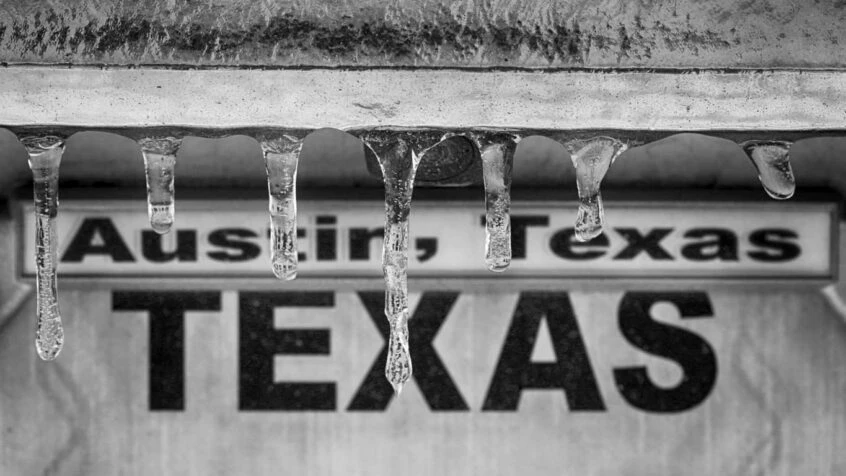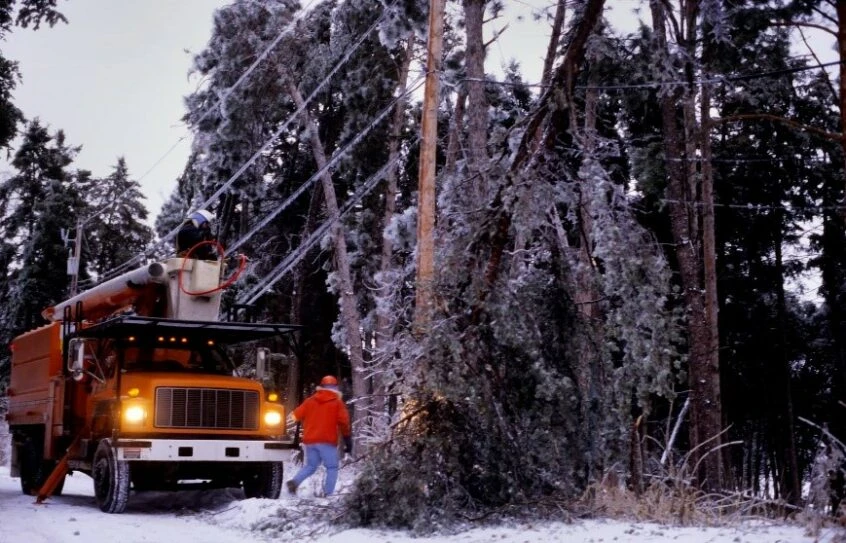
From wildfires in Hawaii to hurricanes in Florida, and sweltering heat, ice storms, boil-water notices, tornadoes, and extended service outages everywhere in between, 2023 has provided many crises (or near crises) on which utility communicators must communicate. That’s why we sat down with Thomas Fladung (below), managing partner at Hennes Communications, a crisis communications firm, to assess the current state of utility crisis communications.
Tom shared so much valuable information in our interview that we’ve decided to divide this blog into two parts: part 1 this month and part 2 in November.

Question: Tom, let’s start with a brief, no-names summary of some of your firm’s utility crisis communications engagements.
Answer: We worked with a municipal electric plant that needed to respond after a coal burning plant that they used was featured unfavorably in a USA Today story that raised valid environmental concerns, but omitted important facts and context. So we worked with them to develop tools and tactics they could use to respond to that reporter as well as in a communications piece they provided to their customers. I believe that piece ran in the local newspaper.
In another instance, we provided communications advice to a nonprofit energy aggregator on a variety of issues, including a proposed law that posed an existential threat to the organization. We have worked with several utilities and a national utility association on messaging and media training around cybersecurity attacks. Finally, we worked with a fast-growing, multi-service utility where growth is driving very large price increases. Our work in that engagement centered on developing a communications strategy that emphasizes conservation measures that they were helping their customers achieve.
Question: OK, so you’re not in your first rodeo with this audience. What would you say is the essence of crisis communications, whatever your industry?
Answer: Organizations need to communicate to the people who matter the most to them. In the case of a utility, that’s your customers, your community leaders, your employees, your business partners, the financial community, and your vendors. Figure out how you can get straight to them, and communicate with them during and after the crisis. In some cases, like high price increases or severe weather, it is essential that utilities get their messages out first. Otherwise, you’re playing catch-up, and almost no one wins when they play catch-up, especially when you allow others, sometimes your opponents, to define the crisis and characterize your response.
Communications tip of the month: In a crisis, the first things your stakeholders want to know is what happened and what you are doing about it. Your initial communications should reflect your organization’s values and priorities. This has gotten harder with social media, but it is imperative that your stakeholders hear first from their utility.
Question: How do crises in utilities differ from crises in financial service companies, manufacturers, and food companies?
Answer: Utilities provide essential services — electricity, natural gas, or water — generally to people living in a geographically defined public. Sometimes that service is interrupted, oftentimes through no fault of the utility. Service interruptions really put a bulls-eye on utilities. Those are the moments of truth, when your stakeholders want to know what you’re doing to fix that problem.
Communications often are the last thing that an organization thinks about during a crisis. Utilities, by and large, do a good job on outage communications, but even the best practitioners want to do better during the next outage. And sometimes utilities are faced with a rare but highly impactful “Black Swan” event like Winter Storm Uri in early 2021.
The first things your stakeholders want to know is what happened and what you are doing about it. Your initial communications should reflect your organization’s values and priorities. This has gotten harder with social media, but it is imperative that your stakeholders hear first from their utility.

When utilities have a weather-related crisis, it’s coming at you from the outside. How you respond is critical, but you didn’t cause the crisis, unless your assets were not properly weatherized to operate in the cold, which was the problem utilities in Texas had during Winter Storm Uri.
Cybersecurity breaches are another example where utilities are victims, but questions will be asked about whether enough was done to prevent a ransomware attack. Were its people trained? Were there firewalls in place? How did the bad guys get inside?
When an organization causes the crisis, the challenge is greatest. Good people can make mistakes, good organizations can do bad things, and there are not-so-good people working in a lot of industries.
Question: The issue of how tree-trimming could prevent wildfires is one such example where the utility was both a victim of forces beyond its control — high winds, dry conditions, high heat — and partly to blame for not managing the vegetation near its equipment, right?

Answer: Correct. And while the courts eventually will sort out who’s to blame and what price they will pay, in the court of public opinion, utilities are on the defense. Utilities need to be as transparent as humanly possible here, and try not to do the natural thing, which is to duck responsibility and hope no one notices. But people notice! We recommend beating people to the punch and ripping off the band-aid in an early stage of a crisis.
We frequently counsel clients when they know bad news is coming to break the news yourselves. And hardly anybody wants to do that. I mean, it’s counterintuitive: who wants to tell a bad story about themselves? But if you do that, we know a couple of things happen. First, you control your story. Then it’s you telling your story. It’s not a reporter breaking the news, it’s not a whistleblower, it’s not an activist on Facebook. If you get your story out first, and it’s the truth and it’s effectively told, you have a much better chance of being believed.

Watch this space next month when we continue the conversation in part 2. You won’t want to miss more valuable tips that Tom shared with us along with his top 5 recommendations to be ready for the next crisis!
Photo credits: iStock unless otherwise noted
Additional EEC Resources
- Communicating More Effectively During Your Next Crisis (EEC webcast)
- Communicating Through Crises (article)
- Build Your Safety Net Before You Need It
- Energy Crisis Communications Made Easier
- Gas Utility Needs Better Crisis Communications
- The Simple, Enduring Truths of Crisis Communications
- Look Inward, Utility Communicators, To Prevent Your Next PR Crisis

